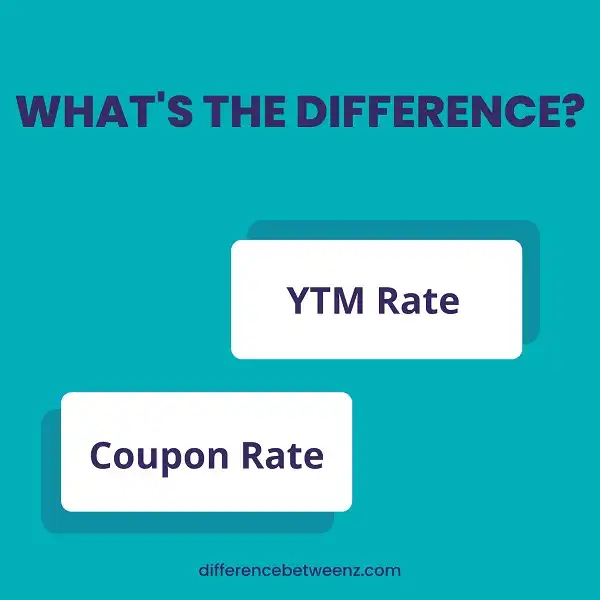When it comes to interest rates, there are a few different terms that you might hear tossed around. Two of the most common ones are YTM (yield-to-maturity) and coupon rate. But what’s the difference between them? And which one should you be paying attention to? Read on to find out!
What is YTM Rate?
YTM stands for yield to maturity. It’s the rate of return you’d earn on a bond if you held it until its maturity date and reinvested all the coupon payments at that same yield. The YTM calculation takes into account the bond’s current market price, its par value, the number of years to maturity, the coupon interest rate, and the frequency of coupon payments.
To calculate YTM, you need to know three things:
– The bond’s current market price
– Its par value
– The number of years to maturity
Once you have this information, you plug it into the following equation:
YTM = [(Coupon payment + (Par Value – Market Price)) / 2] / [(Par Value + Market Price) / 2]
(n/2)
where “Coupon Payment” is the periodic interest payment made by the issuer, “Par Value” is the face value of the bond that’s paid at maturity, “Market Price” is the current price of the bond, and “n” is the number of years until maturity.
What is the Coupon Rate?
A Coupon Rate is the rate of interest that a bond issuer promises to pay the bondholder. The coupon rate is generally fixed for the life of the bond. The payments are usually made semi-annually. For example, if a bond has a face value of $1,000 and a coupon rate of 5%, then the bond issuer will pay the bondholder $50 per year in interest ($1,000 x 0.05 = $50). Coupon rates are set by the issuer at the time of issuance and generally cannot be changed. Coupon rates are one of the factors that investors consider when deciding whether to buy a bond. A higher coupon rate means higher interest payments, which can make a bond more attractive to investors. Coupon rates also play a role in determining a bond’s yield (the return that an investor receives on their investment).
Difference between YTM and Coupon Rates
YTM is the acronym for “yield to maturity”, and it measures the rate of return an investor would earn if they held a bond until it reached maturity. YTM accounts for both the interest payments made (the coupon rate) as well as any capital gains or losses. A coupon rate, on the other hand, is simply the interest rate that is paid out on a bond annually. It does not take into account any capital gains or losses. In order to calculate YTM, one must know the bond’s face value, coupon rate, current market price, and time until maturity. The formula for calculating YTM is as follows: YTM = [(C/P) (1/n)]- [(1+ (C/P))^(-nYTM)] in which C equals annual coupon payments, P equals the price of the bond, n equals a number of compounding periods per year, and t equals a number of years until maturity. As can be seen from the formula, YTM is greatly influenced by both the coupon rate and the amount of time remaining until maturity.
Conclusion
In order to understand the difference between a YTM and a coupon rate, it is important to first understand what each term means. A YTM, or yield-to-maturity, reflects the annual return an investor would receive if they held a bond until it matures. A coupon rate is the percentage of the face value of a bond that is paid out as interest to investors on a yearly basis. The higher the coupon rate, the more money investors will earn on their investment.
It’s important to remember that a bond’s YTM and coupon rate may be different depending on prevailing market interest rates at the time of purchase.


